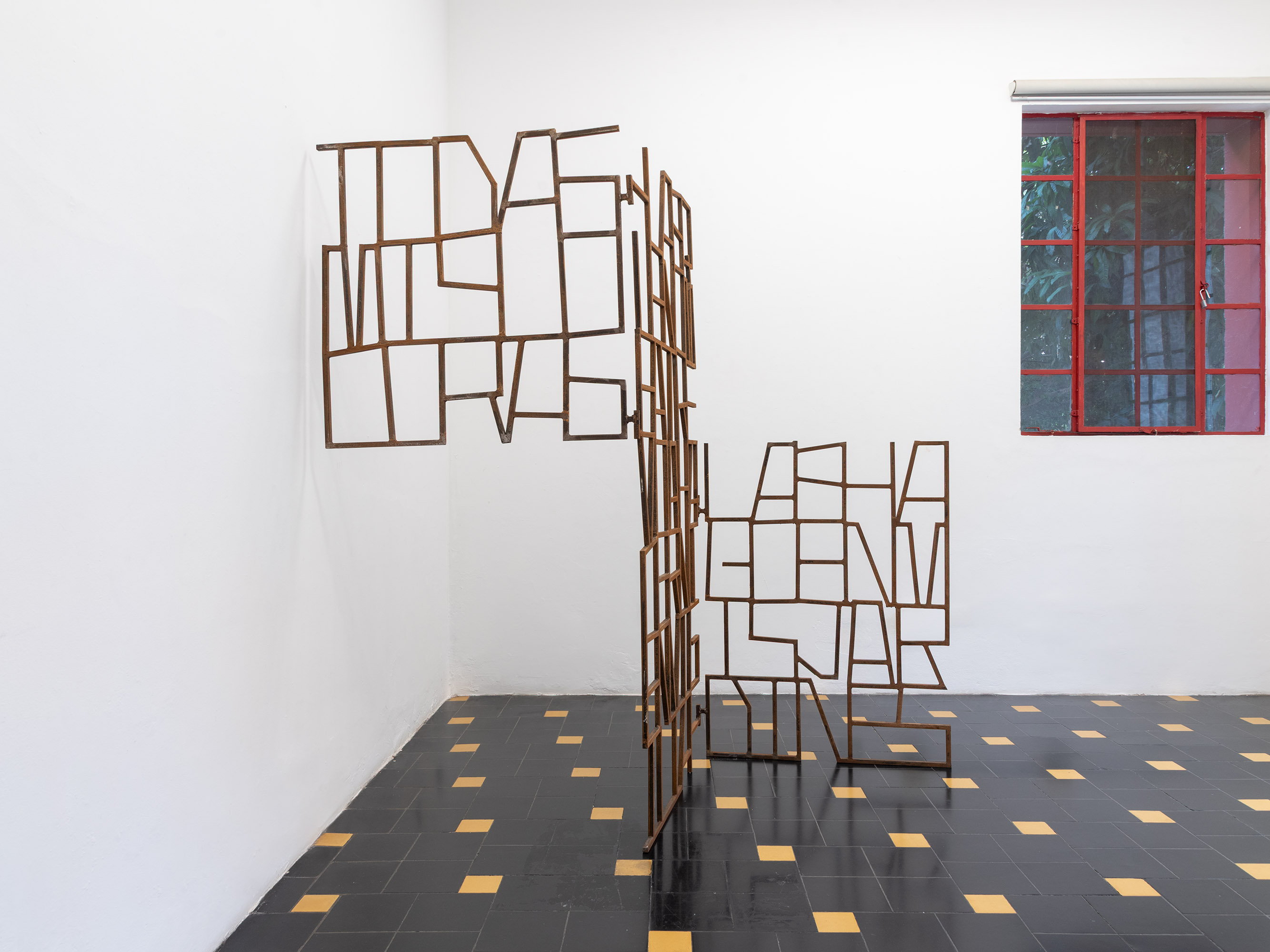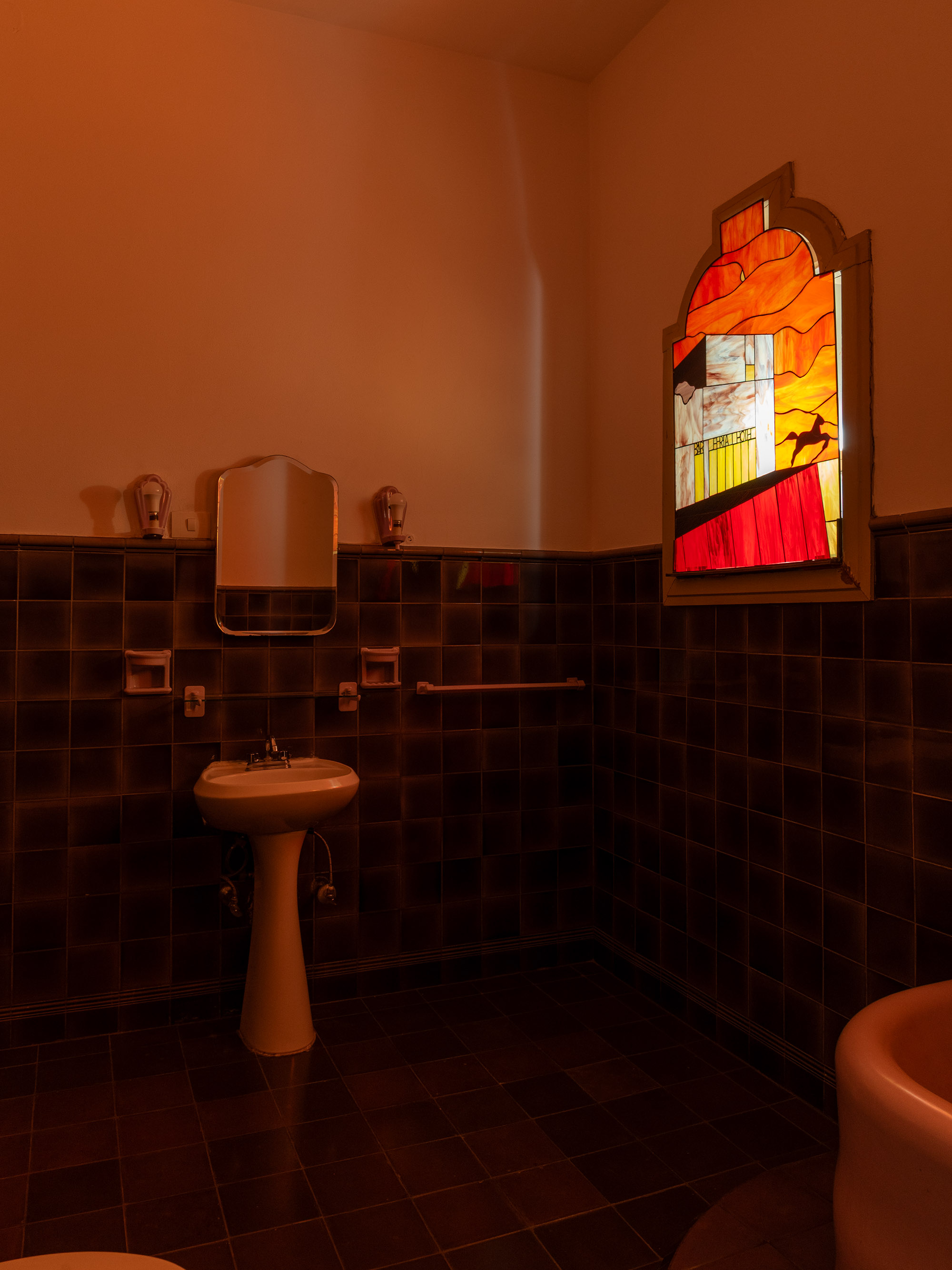
Review
pudor espiritual: Aldo Álvarez Tostado at Casa Cristo
by Gabriel Sánchez-Mejorada
Reading time
5 min
I must begin this text by acknowledging the bias that comes with the affection I have for Aldo Álvarez Tostado. We met almost five years ago and, since then, I’ve had the impression—perhaps mutual—that our conversations orbit what interests us in creation: the body, landscape, identity, and the ways desire writes itself upon us and our spaces. That is why pudor espiritual [spiritual modesty*] is not merely an exhibition I visit: it is a territory I traverse with affection, conscious that sensibility is also a form of knowledge—of knowing ourselves.
Pudor espiritual is exhibited at Casa Cristo, the building Barragán designed just behind the Sanborns on Avenida Vallarta in Guadalajara. I don’t know which was built first—I assume Casa Cristo—but their adjacency catches my attention. If I could grab a marker and intervene on Escritura sobre la pared [Writing on the Wall] (2025), the in-situ gesture Álvarez Tostado installs, I would note that Barragán was sixteen when the first Sanborns opened in the capital. And that decades later he would build a house precisely across from a commercial space that, for some, functioned—or still functions?—as a threshold for discreet encounters: bathrooms and corridors where glances could become invitations. And just behind that backdrop appears the house of one of Mexico’s most important architects, constructed from a sensibility that—without stating itself explicitly—is entirely legible.

Thinking about this intersection of city, desire, art, and architecture reminds me of Adonis from El vampiro de la colonia Roma (Luis Zapata, 1979), who also appears named on the wall of Escritura sobre la pared. Not due to myth, but because his story reveals a recognizable pattern: just as the bathrooms at Sanborns in Colonia Roma, those on Vallarta served for years as spaces where homosexuality found a fissure for encounter. These places are not mere settings—they constitute a precise part of the history of homosexuality in Mexico, one that Aldo retrieves—yet they are also architecture: of desire, of risk, of crossing. But I am not here to talk about Sanborns.

At Casa Cristo’s entrance, a drywall arch divides the space as if completing a construction Barragán might have once imagined. On its surface appear phrases, drawings, and engraved words resembling the markings of bathroom stalls where desire is written in secret. But instead of phone numbers or shameless phrases, what is written here is a parallel history of queer cinema, gay pop culture, and the juxtapositions Aldo uses to think through the history of the twentieth century: the birth of Luis Barragán in 1902, the beginning of E.M. Forster’s writing of Maurice in 1913, the first detected case of HIV in 1984, the release of Por amor by Thalía in 1995, and the publication of Paul B. Preciado’s Countersexual Manifesto in 2000, to name only some of the events inscribed on the drywall of this speculative wall.

Further inside, a door covered in gold leaf bears the word puto handwritten with the crudity of someone scratching something with a key or coin. In the library and bathroom, Aldo transforms the windows into stained glass, echoing the colored lighting Barragán used to bathe spaces in daylight. On the terrace, a sculpture shows two men, one holding the other, a clear reference to Michelangelo’s Pietà. And farther on, another piece—welded rebar with candles at the heads and genitals—suggests an encounter between three bodies. No confirmation is needed: it happens in the spectator’s mind. That is Aldo’s provocation—direct but poetic—where body and desire are thought through form and gesture.
The exhibition operates through layered strata: intimate memory, urban archive, rumor, queer cinema, Barragán’s private writings, and the artist’s own wanderings that seek links rather than definitions. What the artist presents is not a homage, nor historical commentary, nor an archaeological operation, but something sensitive yet incisive: an exercise in encounters among ideas, events, figures, and subjectivities. A practice of encounter—not Grindr’s kind—that instead lets connections materialize in the friction between images, words, and expressions.

What interests me most about this exhibition is that it does not represent the history of an architect, nor of cinema, nor of a community. Through installation, video, sound design, sculpture, and other media, it fictions, speculates, and inscribes those histories onto the walls, visual bridges, and cinematic references it summons. In that sense, pudor espiritual performs what New Queer Cinema did for film: seeking in the cracks small scenes of resistance, pleasure, and expansive subjectivity.
The grammar of sacred and religious art in dialogue with sexual dissidence and Barragán’s architecture maps relationships that expand possible readings of our reality. “Primero amaré al mundo, y luego amaré a Dios” [First I will love the world, and then I will love God,] Rosalía says in LUX, and I dare quote her—not someone else—because it has to do with this: with the earthly, the close, the streets, the bodies, the stories we write in—and from—the world we inhabit. Perhaps that is what this is about: returning to the world before reaching for grander explanations.
Translated to English by Luis Sokol
* In Spanish, pudor evokes a delicate mix of restraint, intimacy, and vulnerability—dimensions that extend beyond the scope of any single English term, even modesty, the closest approximation here.
Published on November 23 2025